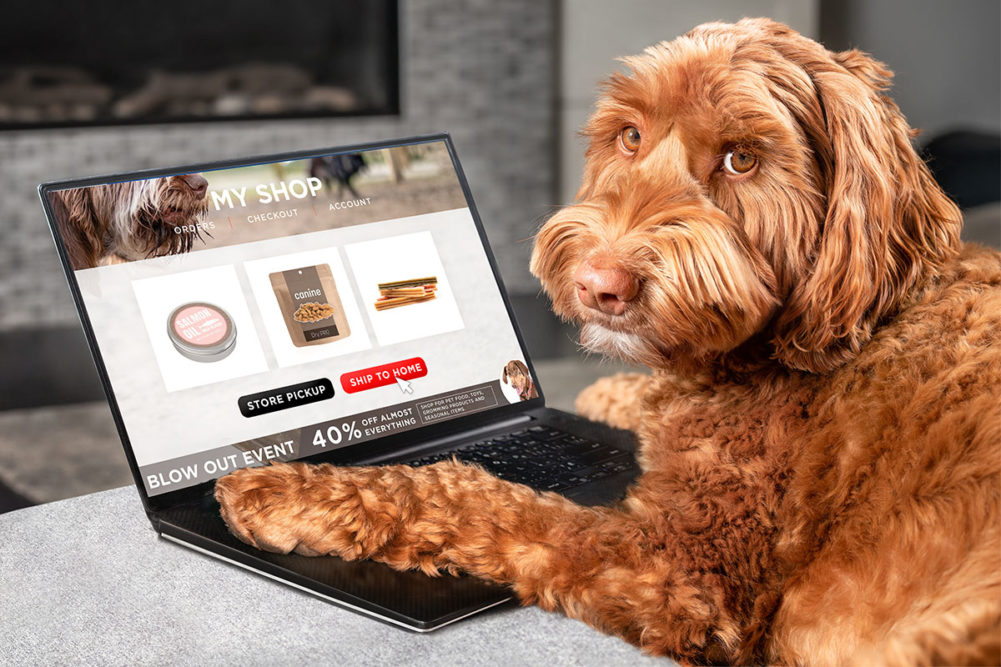CHICAGO — E-commerce has become a common aspect within the pet industry, helping it thrive despite many challenges. With e-commerce comes the omnichannel trend — purchasing products both online and in-store — which offers pet parents more convenience.
Recent data from NielsenIQ details the significant opportunities omnichannel and e-commerce purchasing trends are creating for the pet food and pet industries.
Pet adoptions spark increases in subscriptions
According to the American Society for the Prevention of Cruelty to Animals, almost 1 million pets were rescued from shelters during 2021, marking the highest adoption rate in the United States in six years. With new pet parents, and those expanding their furry families, pet owners are seeking more convenient ways to purchase pet food and supplies.
One of these convenient options pet parents are relying on is product subscriptions. Data from NielsenIQ shows that pet subscriptions are becoming more popular, including pet-themed subscription boxes from BarkBox and Kong Box. With popularity in subscription models growing, many pet food companies and pet retailers have introduced subscriptions to consumers, including McLovin’s Pet, Lily’s Kitchen, Butternut Box and retailer Pet Supplies Plus.
However, e-commerce giants Amazon and Chewy are dominating this e-commerce subscription trend. Pet parents are also opting for automatic shipping and repeat orders from Amazon and Chewy, both of which offer quick shipping, added convenience, and the flexibility to try out new products.
“Carrying home heavy bags of dog food or large litter boxes isn’t ideal, and pet care customers have seen the convenience of online shopping and direct shipping to their door,” NielsenIQ stated in its report. “Our data shows that customers are making fewer shopping trips to brick-and-mortar locations to buy pet products due to people turning to e-commerce and purchasing more per trip than they used to.”
E-commerce competes for brick-and-mortar sales
With pet parents turning toward more online purchasing behaviors, e-commerce in the pet space has experienced significant growth. According to NielsenIQ, online pet care sales amassed $13 billion from March 2015 to March 2022. During the pandemic, from March 2021 to 2021, those sales increased to $20 billion, and further increased to $24.5 billion from March 2021 to 2022. This means that online pet care sales increased about 86.5% in just two years.
 Source: NielsenIQ
Source: NielsenIQThough many pet parents are making the leap to online, decreasing the share of in-store sales, brick-and-mortar stores remain king in the pet care space. Between October 2020 to March 2021, brick-and-mortar-only shopping decreased 21.1% compared to October 2019 and March 2020. Also between October 2020 to March 2021, total brick-and-mortar pet care consumers decreased 14.2%. Although in-store only shoppers decreased in number, the number of trips each shopper took for pet care purchases increased by 132.7% over the same period.
Though in-store pet product purchases still represent the largest share in pet care sales at $43.7 billion as of March 2022, online shoppers are playing a major part in the continued success of the industry. From October 2020 to March 2021, the number of online-only shoppers increased by 73.6%, compared to the previous year.
Despite the number of pet care companies expanding into e-commerce, Amazon remains top dog, accounting for 78.5% of total e-commerce sales.
Omnichannel potential
The e-commerce trend is posing opportunities for traditional, in-person retailers to get their foot in the online market, diversifying their clientele and expanding into the omnichannel pet category. Currently, omnichannel shoppers are driving sales throughout all CPG spaces with 85% of CPG sales coming from omni shoppers — those that purchase both online and in-store.
In the 52 weeks ended March 27, 2021, US pet parents spent almost $60 billion via brick-and-mortar and online, up 15.7% from the previous year, according to NielsenIQ, showing to true potential this space has for the pet industry.
NielsenIQ data also found that omnichannel pet sales from March 2021 to March 2022 exceeded $68 billion, an increase of 14.7% compared to the previous year, and that the omnichannel shopper category has experienced as much growth as online-only shoppers, increasing 28%. Within the omnichannel shopper demographic, 54% of shoppers spent more than they did pre-pandemic and made 41% more trips.
Comparing early-pandemic (October 2019 to March 2021) to mid-pandemic (October 2020 to March 2022) purchasing behaviors, NielsenIQ found that the omnichannel shopper category grew the most as cause of COVID-19. Pet food omnichannel sales mid-pandemic increased 66.4% compared to early-pandemic sales. Comparing these periods, data also revealed a 41.7% increase in the number of omnichannel trips.
According to NielsenIQ, pet food and care companies can increase their online and omnichannel shoppers by focusing on product attributes, as many online-orientated consumers are more motivated to make a purchase based on a product’s attributes.
“While consumers have for many years been increasingly ‘humanizing’ their pets, this trend was accelerated by the pandemic,” NielsenIQ explained. “The pet category has also been influenced by an overall interest from shoppers in products, especially food, that is healthier for their pets or better for the planet.”
Currently, online-only and omnichannel consumers are seeking pet products that foster an emotional connection, as well as remaining top-of-mind on product cost, value, availability and packaging. NielsenIQ found a rise in sales with products that contain “human grade” and “ancient grain” attributes. For example, sales from products that contained ancient grains increased 213% in 2021 compared to the previous two years.
NeilsenIQ also detailed a rise in online human-grade search terms, including those like “raw,” “vegan,” “protein,” “CBD,” “probiotics” and “pumpkin.” Despite the growth in these search terms, NielsenIQ revealed that many pet food products are missing out on sales growth by excluding such product attributes.
Read more about pet retail trends.



